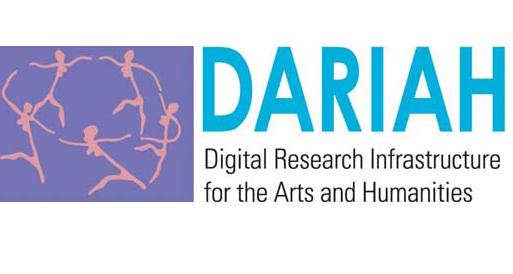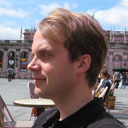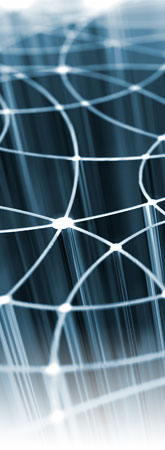Tobias Blanke, Kings College London
THE PIONEERING ROLE OF KINGS COLLEGE LONDON IN THE EHUMANITIES SPACE
Face-to-face with Tobias Blanke, Member of the DL.org Liaison Group
What is the main value-add of Digital Libraries and Research Infrastructures for the Arts and Humanities?
I’ve been heavily involved in setting up the arts and humanities e-Research work in the UK. This kind of initiative has been largely spearheaded by the UK and U.S. but has also spread to other European countries as the benefits have become manifest. DARIAH (Digital Research Infrastructure for the Arts and Humanities) is one of the projects supported by the European Strategy Forum on Research Infrastructures (ESFRI) and is aimed at bringing together all such current initiatives together. This is a very important initiative as it will put a European infrastructure dedicated to the Arts and Humanities firmly on the map. Early research infrastructures have been pioneered for eScience with advanced infrastructures to enable researchers to work together on topics of mutual interest and where cross-border collaboration is seen to be essential for tackling global challenges.
The Humanities field is a relatively late comer in this process, originally mainly interested in building digital libraries as spaces connecting artists and humanists for research, knowledge exchange and creativity. There has always been a fascination with the idea of a universal library that brings together archives and private collections, creating lots of work in traditional Digital Libraries for Humanities.
Recently Research Infrastructures have been discovered in the attempt to support Humanities research practices on digital library resources. One challenge lies here in transforming libraries into a “community space”, where people can meet and work together, that is, an interactive forum as opposed to a simple collection of digital content available to researchers in the Humanities.
Can you cite any success stories and top-level challenges moving forward?
There have been a lot of success stories. While our understanding of “Digital Libraries” has evolved over time, there has always been an historical link between Digital Libraries and Digital Archives and humanists are highly specialised in cataloguing content. Some good cases in point include the Blake Archive in the U.S. and the Old Bailey Records Online dating back to the eighteenth century in the UK, which is of general public interest, as well as early work on data services with, for instance, the Oxford Text Archives founded in 1976.
One of the main challenges is to build on successful Digital Libraries in the field and particularly to foster the shift from a situation where individual repositories operate as silos, which makes it harder for researchers to make those all-important connections that lead to new research discoveries and facilitate cross-disciplinary research.
Another challenge is inextricably linked with the Semantic Web. Humanists have fostered new ways of publishing content and resources enhanced with annotations and semantics. However, this information disappears on the traditional world wide web as a collection of documents. Hence, it is essential that we have deeper information layers and bring the semantic layer to the fore to help connect content and resources. So when it comes to looking at what might be the next steps, connecting and linking-up content is key. Addressing this challenge is of great interest to the community.
In your view, what are the main specific challenges for DL interoperability?
There is no doubt that achieving DL interoperability is essential not only in the shift towards an advanced information space and cross-disciplinary research but also to foster innovation across the board. In the old days of IT, the market was dominated by a few big players, so it is important that we open up new research perspectives by enabling more players to come on board. Interoperability is one way of achieving this goal. However, conveying the benefits of interoperability is a challenging task as most researchers are primarily interested in advancing their research and may not see the practical benefits of interoperability. They may even see interoperability as an impediment to creativity. Approaches should thus aim to demonstrate how we can combine grass-root research activities with an information and research environment that links people together and opens up new research perspectives, while at the same time seamlessly integrates additional requirements regarding the interoperability of resources.
This is very much a social challenge that needs to focus on changing mindsets. In this respect, DL.org, as a co-ordination action, has a very important role to play in conveying the benefits of interoperability for the diverse stakeholders, including key players in the Humanities space, not only DL end-users but also archivists and librarians as content curators, system librarians and decision-makers particularly on the policy and investment front. If we look back in history, all standardisation effort basically boils down to human-to-human interaction. Hence community engagement is key to bringing interoperability benefits and best practices into sharp relief.
What approaches to interoperability would you recommend and how would you position DL.org in this landscape?
DL.org has embarked upon a strategy to enable interoperability from a multi-layered perspective. Key assets of the project certainly comprise the Technology & Methodology Cookbook, which is being developed and will leverage this successful approach in computer science. The Cookbook is an excellent example of how interoperability can be embedded into everyday work and practices.
The enhanced DL Reference Model is a formal tool of value to the community. Showcasing user models and perspectives in this context is also of interest as we widen the scope and ensure a bottom-up approach and community-driven input, which will also help to gain a critical mass around DL interoperability.
What role do standards play?
Standards and especially open standards play a very important role as the most successful means of providing interoperability. To this end, we need to pinpoint the most successful standards and understand their relevance to DL interoperability moving forward.
Looking at the success of the world wide web, we need to foster a bottom-up approach also in terms of DL interoperability. Communication is a vital part of this process, whereby expertise, knowledge and best practices should be interwoven to create a point of gravity on the development and implementation of standards, while also ensuring that any new knowledge acquired in this area is passed on to others, thereby ensuring collective knowledge and awareness. Standards are also effective in formalising the goals and outputs of any research project underpinned by advanced infrastructures, tools and systems. Ultimately, this can lead to new interoperable systems as advances are made in the field, enabling users to relate to and connect with others. It is therefore also important to showcase provision to the user.
How will DARIAH contribute to this landscape?
The added value of DARIAH for national activities is that it provides a framework for pan‐European co-operation and the sharing of work and experience. To this end, DARIAH has established relationships with national infrastructures to ensure a mutually beneficial approach to research infrastructures for the Arts and Humanities. On the one hand, DARIAH can foster the development of new national infrastructures. DARIAH’s governance model is highly distributed, too, and based on four core virtual competency centres that cover scholarly content expertise, technological expertise, research expertise and outreach. These VCC’s are our model for advanced international collaboration in the field of research infrastructures in the arts and humanities. One of the main challenges that need addressing lies in bringing together heterogeneous archives and resources to facilitate research in the Arts and Humanities and open up new, collaborative perspectives. In a nutshell, DARIAH will contribute to the shift towards collective knowledge, on which the value-add of European research infrastructures hinges.
Nicholas Ferguson & Stephanie Parker, Trust-IT Services Ltd
Tobias Blanke Profile

Tobias Blanke is a Research Fellow for the Arts and Humanities eScience Support Centre (AHeSSC) at King's College London. He also serves as an expert in DL.org’s Liaison Group, which evaluates the main outcomes of the project, the Digital Library Reference Model and Technology & Methodology Cookbook. Tobias is currently involved in the DARIAH project, which is funded by the European Strategy Forum on Research Infrastructures (ESFRI).

